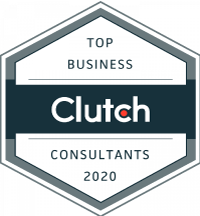A while ago I started noticing a surprising number of agency owners repeating what sounded like a nursery rhyme: “The shoemaker’s children go barefoot”.
What? Who talks like that?
When I dug deeper, I realized it was because they were embarrassed about their websites.
Think about it: these are agencies that pride themselves on helping others improve their branding, but their own websites weren’t walking-the-walk.
Soooo I probably gave them a laundry-list of things to fix, and hooked them up with an ace copywriter, right?
Wrong.
In fact, I usually recommend they stop caring about their website altogether.
Blasphemy, right? How could I downplay the importance of a spiffy website for those who are selling spiffy websites, among other highly visual marketing services? Isn’t your site your main business driver? Maybe, maybe not…
It’s okay if the shoemaker’s children go barefoot.
Your website takes on different weight if you have your inbound act together, and you’re doing a lot of business directly through your site via traffic and leads acquired through SEO, PPC, or organic search (more on that later).
If you’re like most agencies, however, that’s not you.
You probably get the lion’s share of your business from referrals and word of mouth. You knock on doors and get intros to drive business. You’re in the direct sales world, and that’s fine. Yes, your website matters to some extent, and it should look professional, but ultimately it’s a souped up business card, and a business card is not worth obsessing over. Your glucose is better spent perfecting your sales script rather than selecting the right shade of blue for your About page banner.
You’re still skeptical, aren’t you?
Well, here are a few facts that might make you a believer:
Scores of agencies with crappy sites are silently killing the game.
I’ve personally worked and interacted with dozens of agencies touting single-page, 1990’s-looking websites who regularly generate seven to eight figure revenues, unbeknownst to the occasional sneering passerby who lands on their crap site. Their secret is not an “old boys’ network”, nor is it fancy software products. Rather, they understand a crucial reality: their services are NOT for mass consumption. The wise shoemakers invest in their sales teams, not in designers (even if the sales “team” is a singular owner).

Branding is probably not worth the opportunity cost.
Your website is just one of many traffic channels, and unlike coca-cola, you can’t afford to have countless channels. Why? Opportunity cost. That means everything you spend on a weak channel is a dollar or an hour you can’t spend on a strong one. The best marketers recommend focussing on just one-to-three channels, so if your website isn’t in the top 3, it’s time to let it go.
Your services are NOT for mass consumption.
The beautiful websites and sales funnels that enrich the software companies that sell you their wares are probably overkill at best and detrimental at worst when it comes to persuading your high-end clients. When you’re asking a prospect to shell out five figures or more, and put her professional reputation on the line, you want her to feel like a special snowflake, not a face in the crowd.
“But wait!”, you may be thinking: “doesn’t it work for Squarespace?”
When it comes to the software domain, which dominates the marketing guru-sphere, buyers want a “set it and forget it” solution, so sellers attract them by instilling a feeling of community. After all, buyers want the sort of reliability that’s attested to by the masses, and they don’t want or need handholding. In fact, too much implied handholding is a turnoff since it indicates a time suck. When it comes to your white glove marketing service, on the other hand, instilling a sense of community will make your buyer feel like another face in the crowd when they should be feeling like a special snowflake.
Practically speaking, how do you make your high-end prospects feel unique and special? There are many ways, but here’s one example: send PDFs instead of landing page links. Landing pages = mass consumption, PDFs = curation.
Sales über alles.
Closed business is determined by the conversations you had weeks or months ago. Whether business is booming, average, or lackluster, you have to keep your pipeline full, and reserve time for sales throughout your week, or you’ll find yourself in the Feast-And-Famine Rut. It’s better to sell from a position of abundance instead of scarcity because you’ll project confidence instead of desperation. If you’re filled-to-the-brim with big projects, that’s great, but what happens in a month or two when they wrap up? What comes next?
All-of-which is to say, anything you’re spending your time on that’s not getting prospects on the phone – especially a website your core customers don’t care about – is probably costing you money.
How you choose to free up time to work your pipeline is up to you. Maybe you prioritize lower commitment retainer clients, or otherwise alter the scope of your services. Maybe you hire a full-time salesperson, or you get client services help. Perhaps you enlist a company like ours to get you quality leads. Whatever you choose, when it comes to your pipeline, it’s all about consistency.
But you want those sweet, sweet inbound leads don’t you?
You can’t wait to try your hand at SEO, PPC, social media and other strategies what will make traffic flow like wine. Right on! I’m with you. After all, inbound leads tend to be more enthusiastic and trusting, and once you turn your sail to the right traffic stream, your ship will move swiftly. But keep this in mind…
Every inbound strategy is an experiment.
It might take months of writing and tweaking content to know whether your labor will result in enough prospects and/or the right prospects. If you’re pursuing niche, high-end buyers, there’s a lot less data to draw from, so it will take longer to know what’s working. For example, Facebook ads will give you amazing insights if you’re targeting solo entrepreneurs for your new SaaS product, but results can be cryptic when you’re using ads to bring in CMOs at large lifestyle brands. To ensure the lights stay on while you’re tinkering, you’ll need to keep your pipeline bulked up, and knocking on doors via outbound lead generation methods is the most effective way to do that.
“Aha! But don’t I need to be tweaking my website constantly to grow that garden of inbound leads?”
No, for two reasons:
First, unless you have iron-clad product-market-fit, you’re going to have to change your website copy anyway. You might as well wait until you have so much business coming from the phone that you can afford to hire somebody to pour gasoline on your proverbial roaring fire by creating you a kick ass, laser-targeted site, at which point you’ll feel confident about the investment.
Second, many of the seeds for your inbound leads are sewn offsite, through things like guest posts and podcast appearances. Generating traffic and leads from these channels, which are essentially partnerships, hinges on good old fashioned relationship building, not branding.
Myth: “I have to be everywhere.”
The Pareto Principle, which is paraphrased to the idea that roughly 80% of your results come from 20% of your efforts, applies to inbound marketing. One-to-three strategies will strike gold and the others will provide very modest or nonexistent traffic. Start with no more than a couple strategies, and prioritize the places where your clients are already hanging out (LinkedIn is my best rec if you’re a high-end agency).
Build your site to be a lightweight skiff, not an aircraft carrier.
Remember, everything is an experiment when it comes to inbound, and you don’t know what niches or strategies will go off like gangbusters and which will fall flat. Instead of spending months building an elaborate website that you’ll invariably have to revamp, use off the shelf products (like Thrive Themes, for example) to build your sales funnel.
Don’t be the anal retentive carpenter.
One of my favorite Saturday Night Live sketches is one from the 80’s where Phil Hartman plays an instructional carpenter on TV, teaching viewers to build a birdhouse (or something like that). He uses a specialty tool for every aspect of the project, and at every cut of the wood he stops, puts the saw in its holder, and sweeps the sawdust into a designated sawdust bag. Naturally, he never finishes the birdhouse, and the show ends awkwardly.
I’ve observed the anal retentive carpenter phenomenon among agency owners and entrepreneurs of all stripes, and I’m guilty myself. You use tools and processes as resistance to avoid the fear of shipping. You don’t need much to propel your agency forward, really just a phone and a lead (preferably warm, but cold works too). If you have a decent-looking site, all the better. Still, so many of us defer the fear by perfecting our CRMs, tinkering with our websites, or attempting to concoct a completely unnecessary Rube Goldberg machine of marketing grandeur.
Don’t be the anal retentive carpenter, just go out there and ship!







